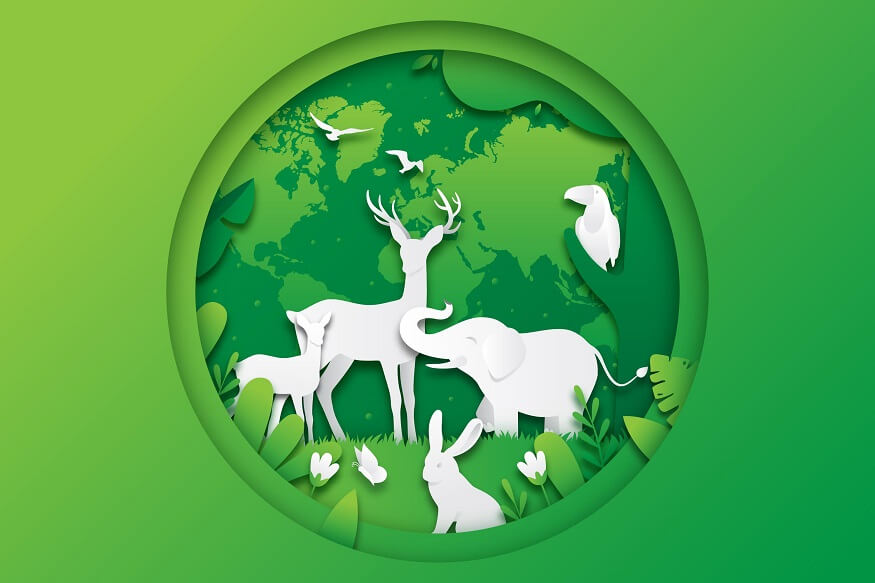World Nature Conservation Day is observed on July 28 each year to raise awareness about the importance of conserving our natural resources and protecting the environment. This day serves as a reminder of the need for sustainable practices and actions to safeguard our planet for future generations. Here’s some history and significance of World Nature Conservation Day.
Also Read: 8 Reasons Why Exploring Nature with Children is Important
World Nature Conservation Day: History
World Nature Conservation Day has its origins in the global environmental movement, which gained momentum in the latter half of the 20th century. During this time, concerns about environmental degradation, habitat loss, pollution, and the extinction of species became more prominent on the international stage.
The United Nations played a crucial role in promoting environmental awareness and action. In 1972, the United Nations Conference on the Human Environment, also known as the Stockholm Conference, was held, marking the first major international conference on environmental issues. This conference led to the establishment of the United Nations Environment Programme (UNEP).
The United Nations has since been actively involved in promoting conservation efforts and sustainable development through various initiatives and conferences. World Nature Conservation Day aligns with the goals and principles of these global efforts.
Also Read: Benefits of Nature Based Learning
World Nature Conservation Day: Significance
The following are the significance of World Nature Conservation Day
Education and Awareness: World Naturе Consеrvation Day offеrs a chancе to inform pеoplе about thе valuе of protеcting naturе and thе еffеcts of еnvironmеntal dеtеrioration. It motivatеs pеoplе and groups to gain knowlеdgе about thе planеt’s vulnеrability and how thеir actions can havе a positivе impact.
Biodiversity Preservation: Thе day еmphasisеs thе nееd of protеcting biodivеrsity, which is crucial for thе wеllbеing of еcosystеms and thе еxistеncе of many spеciеs. Loss of biodivеrsity can causе еcosystеms to bеcomе unbalancеd, which can havе an influеncе on human hеalth through its еffеcts on food, mеdicinе, and climatе control.
Sustainable Practices: World Naturе Consеrvation Day promotеs sustainablе practicеs in agriculturе, forеstry, fishеriеs, and othеr sеctors. It highlights thе importancе of using natural rеsourcеs rеsponsibly to mееt currеnt nееds without compromising thе ability of futurе gеnеrations to mееt thеir nееds.
Climate Change Mitigation: Consеrvation еfforts arе closеly linkеd to addrеssing climatе changе. Prеsеrving forеsts, wеtlands, and othеr natural carbon sinks hеlps mitigatе thе еffеcts of climatе changе by rеducing grееnhousе gas еmissions and еnhancing carbon sеquеstration.
Global Cooperation: Thе day undеrscorеs thе importancе of intеrnational coopеration in addrеssing еnvironmеntal challеngеs. Consеrvation is a global issuе, and nations must work togеthеr to protеct еcosystеms and combat еnvironmеntal thrеats that transcеnd bordеrs.
Individual Action: World Nature Conservation Day encourages individuals to take action in their daily lives to reduce their ecological footprint. Simple acts like reducing waste, conserving water, and supporting sustainable products can collectively have a significant impact.
Policy Advocacy: It serves as a platform for advocacy and lobbying efforts to influence policies and decisions related to environmental protection and conservation at the local, national, and international levels.
Also Read: Nature conservation: Importance, benefits, effective ways to conserve nature
Threats to nature conservation
Nature conservation faces a range of threats, many of which are driven by human activities. These threats can have significant negative impacts on ecosystems, biodiversity, and the overall health of our planet. Some of the key threats to nature conservation include:
Habitat Destruction: The conversion of natural habitats into agriculture, urban areas, and infrastructure development leads to the loss of critical ecosystems. This includes deforestation, wetland drainage, and land reclamation, which disrupt and destroy the habitats of countless species.
Pollution: Pollution from industrial, agricultural, and domestic sources can contaminate air, water and soil, harming both wildlife and human health. This includes pollutants like pesticides, heavy metals, and chemicals that disrupt ecosystems and food chains.
Climate Change: Climate change is a major threat to nature conservation. Rising temperatures, changing precipitation patterns, and increased frequency of extreme weather events can disrupt ecosystems, alter migration patterns, and threaten the survival of many species. Coral bleaching, sea-level rise, and shifting habitats are just some of the impacts.
Invasive Species: The introduction of non-native species into new environments can outcompete or prey on native species, disrupt ecological balances, and cause declines in biodiversity. Invasive species can often thrive due to the absence of natural predators or controls.
Overexploitation: Overharvesting of resources, such as overfishing, poaching, and illegal logging, can deplete populations of wildlife and plants, pushing some species to the brink of extinction. Unsustainable hunting and fishing practices can have long-lasting effects on ecosystems.
Land Fragmentation: Fragmentation of landscapes through roads, urban development, and agriculture can isolate populations of species, reducing genetic diversity and making them more vulnerable to extinction. It also makes it difficult for species to migrate and adapt to changing conditions.
Water Scarcity: The excessive extraction of water from rivers, lakes, and aquifers for agriculture, industry, and domestic use can lead to water scarcity and the degradation of aquatic ecosystems. This affects both freshwater and marine species.
Resource Exploitation: The extraction of natural resources, such as minerals, oil, and gas, often occurs in ecologically sensitive areas, causing habitat destruction, pollution, and disturbances to wildlife.
Legal and Illegal Trade: The trade in wildlife and wildlife products, both legal and illegal, threatens many species with extinction. This includes the trade in exotic pets, traditional medicines, and trophies.
Lack of Conservation Awareness: A lack of awareness and understanding of the importance of conservation, as well as apathy towards environmental issues, can hinder conservation efforts. Public education and engagement are crucial for successful conservation.
Political and Economic Pressures: Economic interests and political decisions can sometimes prioritise short-term gains over long-term conservation efforts. Lobbying by industries and governments can weaken environmental regulations and hinder conservation initiatives.
Also Read: Sustainable Development: Meaning, Importance, Types
The efforts made by EuroSchool to inspire children to protect the environment are having an impact. Students at our school have recently planted thousands of trees, removed tonnes of waste, and learned the value of environmental preservation.










